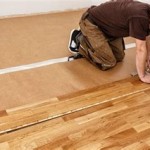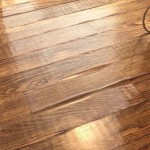Acclimation of Engineered Wood Flooring: A Guide for Installation Success
Engineered wood flooring, with its durability and aesthetic appeal, has become a popular choice for homeowners. However, proper installation is crucial for ensuring the longevity and beauty of these floors. A critical step in this process is acclimation, allowing the wood to adjust to the temperature and humidity of its new environment. This article delves into the importance of acclimation and provides valuable tips for achieving successful results.
Why Acclimation is Crucial
Engineered wood flooring, despite its engineered nature, still retains the natural properties of wood. This means it is susceptible to expansion and contraction due to fluctuations in temperature and humidity. If installed without proper acclimation, the wood may warp, cup, or gap – compromising the beauty and integrity of your floors.
Acclimation allows the wood to adjust to the prevailing environmental conditions of the room where it will be installed. This process ensures that the wood reaches an equilibrium with the moisture levels in the surrounding air, preventing further movement after installation.
The Acclimation Process
The ideal acclimation period for engineered wood flooring is typically 48 to 72 hours. However, the specific duration may vary depending on factors such as the type of wood, the humidity levels, and the temperature range of the room.
Here's a step-by-step guide for acclimating engineered wood flooring:
- Store the flooring: Unpack the flooring and store it in the room where it will be installed. Avoid placing it directly on concrete or other cold surfaces. Instead, use a pallet or raised platform to allow for proper airflow.
- Maintain optimal conditions: Ensure the room temperature remains between 65°F to 75°F (18°C to 24°C) and the relative humidity between 30% to 50%. You can achieve this by using a dehumidifier or humidifier as needed.
- Inspect the flooring regularly: Check the wood planks throughout the acclimation period. If you notice any changes in moisture content or warping, adjust the room's temperature or humidity to create a more stable environment.
- Allow sufficient time: Do not rush the acclimation process. Give the wood enough time to stabilize before beginning installation.
Tips for Successful Acclimation
Here are some additional tips to ensure successful acclimation of your engineered wood flooring:
- Choose the right flooring: Not all engineered wood flooring is created equal. Different types of wood and finishes can respond differently to temperature and humidity changes. Consider your climate and consult with a flooring specialist to choose a flooring that will acclimate well in your environment.
- Monitor the weather: Extreme temperature swings or high humidity can affect the acclimation process. If your area experiences such conditions, adjust the acclimation period accordingly.
- Consult with a professional: If you are unsure about the acclimation process, contact a professional flooring installer. They can provide guidance and ensure that your flooring is properly acclimated before installation.
By properly acclimating engineered wood flooring, you can ensure a successful installation that will yield beautiful, long-lasting floors. Acclimation may seem like a small detail, but it plays a crucial role in the overall performance of your flooring.

3 Reasons Why You Should Acclimate Engineered Flooring From The Forest Llc

Acclimating Hardwood Flooring A Little Bit Of Science Lot Common Sense Vermont Plank

How To Acclimate Wood Flooring Esb

Hardwood Floor Acclimation How Long To Wait Before Installation

Expert S Corner Acclimating Your Engineered Hardwood Lifecore

Everything You Need To Know About Acclimating Hardwood Flooring Impressions Collection

How To Acclimate Solid Wood Flooring Rw Supply Design

Flooring Acclimation Explained Jona Panel S Inc

Acclimating Hardwood Flooring A Little Bit Of Science Lot Common Sense Vermont Plank

Flooring Acclimation Hardwood Vinyl More Cali
See Also







